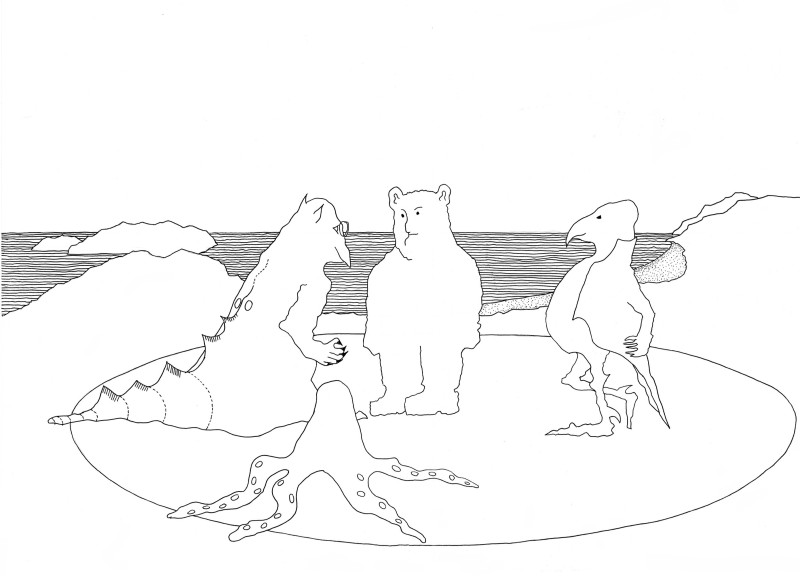5 key facts about this project
The recent design reimagines the ancient city of UC10, which consisted of seven islands destroyed by a volcanic eruption a century ago. The goal is to create a virtual environment that honors the memory of this lost city while encouraging new types of interaction within a digital space. The concept revolves around a minimalist approach, emphasizing user experience and engagement over traditional forms of architecture.
Circular Terrace
At the center of the design is a circular terrace located at the highest point of the main island. This terrace serves as both a workspace and a living area, offering wide views of the virtual landscape. Prominently featured is a levitating tablecloth that can be made to appear and disappear with gestures from users, alongside a cushion. This aspect highlights the design's focus on interactivity and the user's role in shaping their environment.
Minimalist Approach
The design opts for a minimalist aesthetic, moving away from conventional architectural forms. No protective structures are present, allowing for open space that encourages fluidity and adaptability. A mobile shading device is included to reduce glare on work surfaces, maintaining functionality while preserving the minimalist theme of the overall design.
Dynamic Ecosystem
Another important feature is the incorporation of a self-sustaining digital ecosystem. This ecosystem includes various plant and animal species that can reproduce and change over time, fostering continuous growth and interaction. Such a dynamic environment challenges traditional views of static spaces and offers an engaging, responsive interface that develops with the user's actions.
Temporal Experience
The project manipulates environmental features like gravity, set at 75% of Earth's standard, and sound propagation to enrich the experience. It also introduces programmed daylight to simulate photosynthesis. An artificial sun travels across the digital sky, changing the light and shadows throughout the day, thereby enhancing the sense of time within the virtual space.
The terrace design promotes unobstructed views and fosters a connection with the digital ecosystem, allowing users to interact fully with their surroundings in an environment that reacts intelligently to their presence.






















































